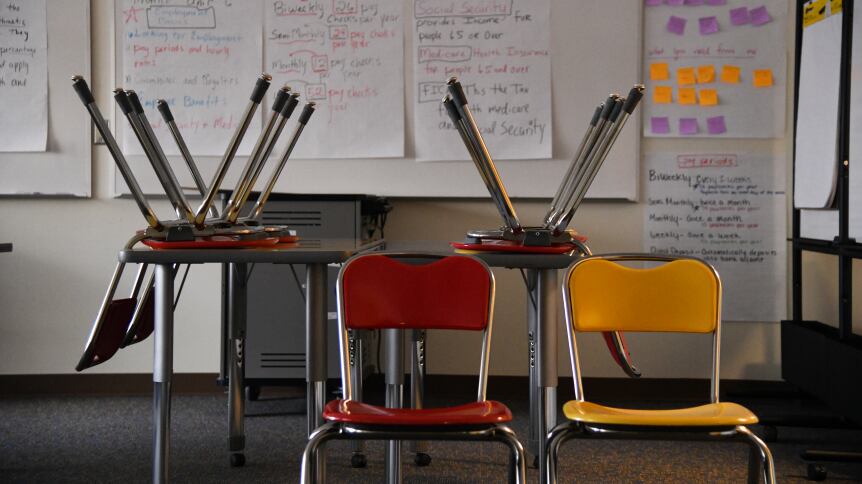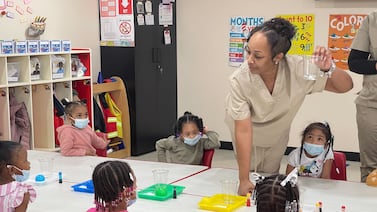Declining enrollment is arguably the most pressing issue facing Denver Public Schools, and the district’s latest annual report takes a deep dive into current numbers and future predictions.
Fewer students means less money for the district and more challenges offering robust services. The enrollment data is especially important as the district grapples with how to close small schools.
Here are seven takeaways in nine charts from the district’s annual strategic regional analysis report. All charts are from the report.
Denver is losing the most students at the elementary level
Enrollment dropped more than 3% from 2019 to 2021 — from 93,800 students to 90,202 — and the district predicts it will drop by another 4% to about 87,200 by 2026.
Declines are steepest at the elementary school level. Elementary enrollment peaked in 2014 and has been decreasing ever since.
Middle school enrollment has begun decreasing as well, and the district predicts it will drop even more as smaller elementary school cohorts move into middle school. High school enrollment is expected to stay stable for the next five years but decrease after that.
In the chart below, H stands for high school, M stands for middle school, E stands for elementary school, and EC stands for early childhood education, or preschool, enrollment.
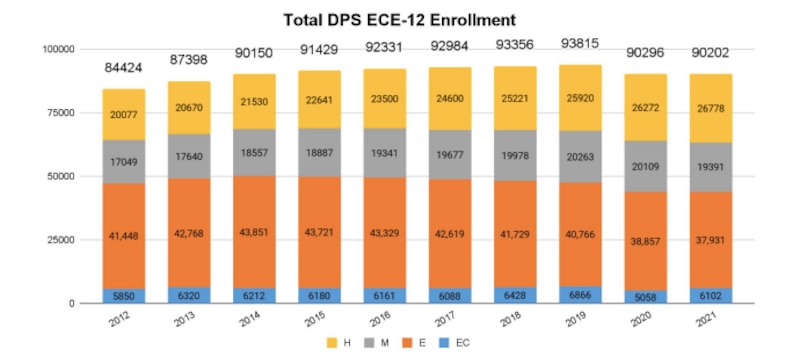
Denver has fewer children than it did a decade ago
Lower birth rates are one of the primary drivers of enrollment decreases, the report concludes. The chart below shows population changes in Denver from 2010 to 2020, according to the U.S. Census Bureau. The red dots show decreases in the population of children under 18. Falling mostly in the west and north of the district, the red dots follow a familiar pattern that Denverite has described as an “inverted L” that “illustrates stark physical and socioeconomic barriers in the city.”
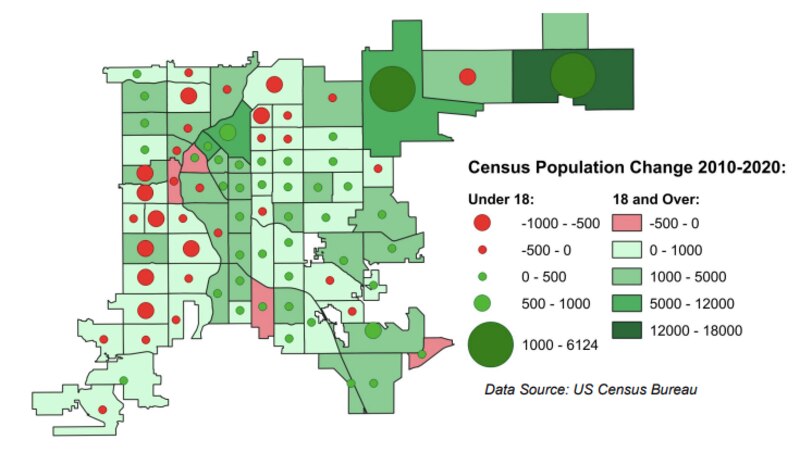
Birth rates are declining fastest among Hispanic families
Hispanic students make up more than half of the students in Denver Public Schools, and the report notes that the decline in births among Hispanic families “will have a significant negative impact” on district enrollment. Birth rates among non-Hispanic families, many of whom are white, are actually slightly increasing. But white families are less likely than Hispanic families to enroll their children in public schools.
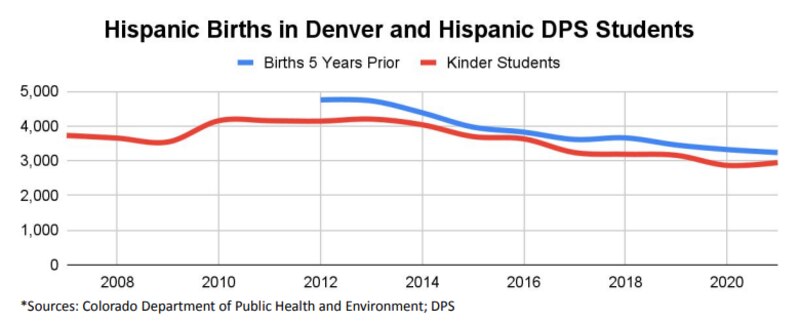
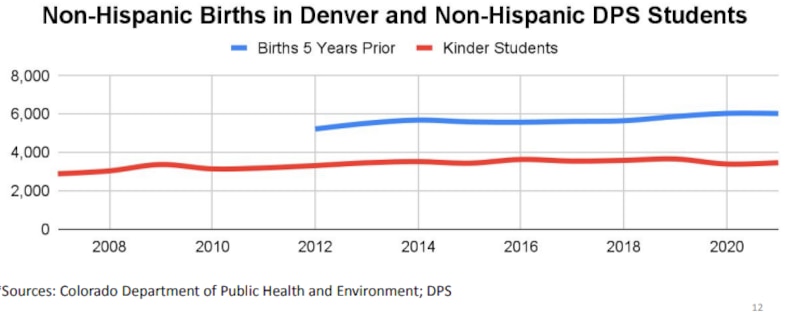
Denver isn’t building very much housing for families
High housing prices that push families out of the city are another primary driver of declining enrollment, the report says. To predict future enrollment, the district looks at where developers are planning to build new housing — and what type of housing they’re building.
Become a Chalkbeat sponsor
The map below shows that most new housing will be condos, apartments, and townhomes, which historically yield fewer students than do single-family homes. Some areas of the city like southwest Denver have little new development planned. “As a result, higher housing prices are driving families out of the region while non-child households are moving in,” the report notes.
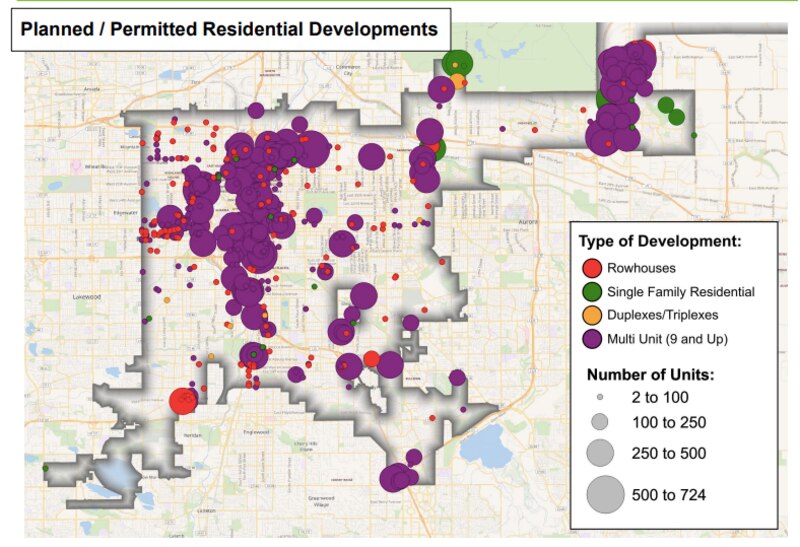
The makeup of Denver’s student population is changing
All of these changes mean the student population in Denver is getting whiter and wealthier.
On the chart below, FRL stands for free and reduced-price lunch. It indicates the percentage of students who receive subsidized school meals, a measure of poverty.

Most parts of the city expect to have fewer children
There are a few neighborhoods in the northeast part of the city where enrollment is expected to grow over the next five years due to planned housing development. But enrollment in 90% of the city’s 78 neighborhoods is expected to decline, leading to too few students and too many seats.
Currently, northwest Denver has the largest surplus at about 9,000 unfilled seats, though both northwest and southwest Denver are predicted to have more empty seats by 2026.
The charts below show actual enrollment in schools in the two regions in 2021, predicted enrollment in 2026, and the total number of seats — the current capacity — in each region.
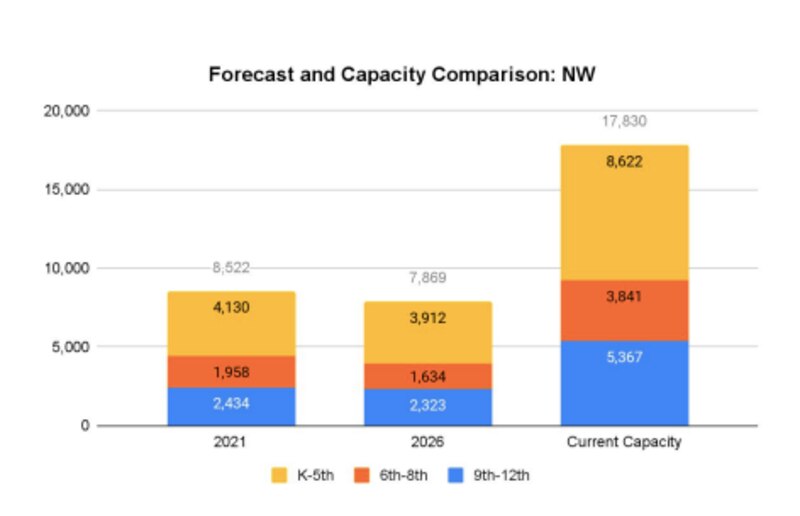
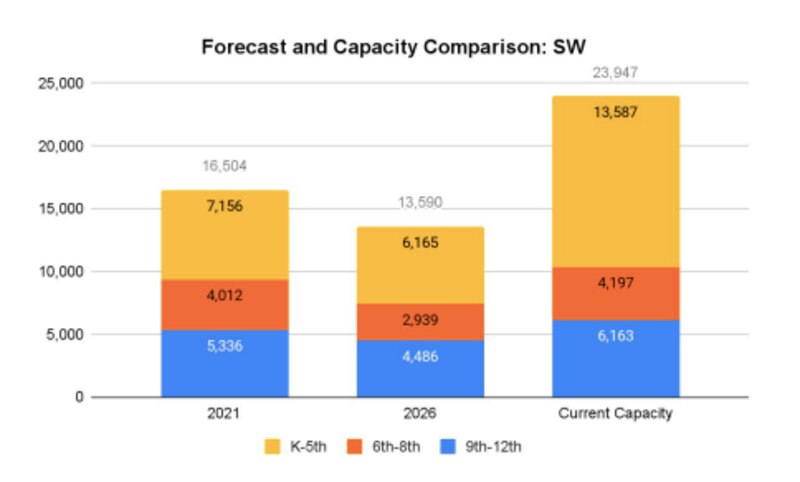
Students still use school choice to enroll in Denver schools
The number of students who live outside Denver and transfer into Denver Public Schools is higher than the number of Denver students who transfer out to other districts. This year, the net gain for the district was about 1,350 students, the report says. Denver loses the most students to Jeffco Public Schools and gains the most students from Aurora Public Schools, which is listed on the chart below by its official name, Adams-Arapahoe 28J.
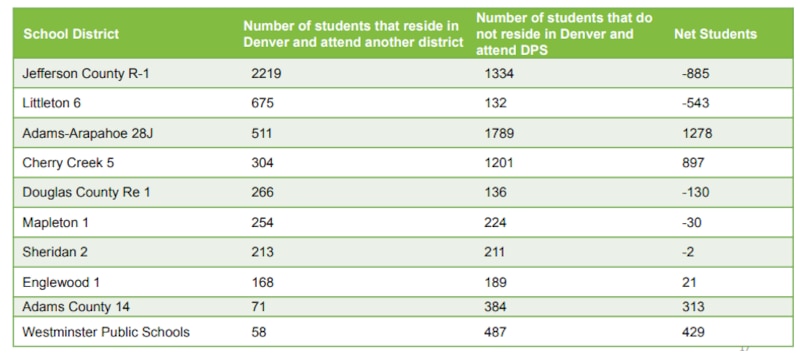
Melanie Asmar is a senior reporter for Chalkbeat Colorado, covering Denver Public Schools. Contact Melanie at masmar@chalkbeat.org.
Become a Chalkbeat sponsor


